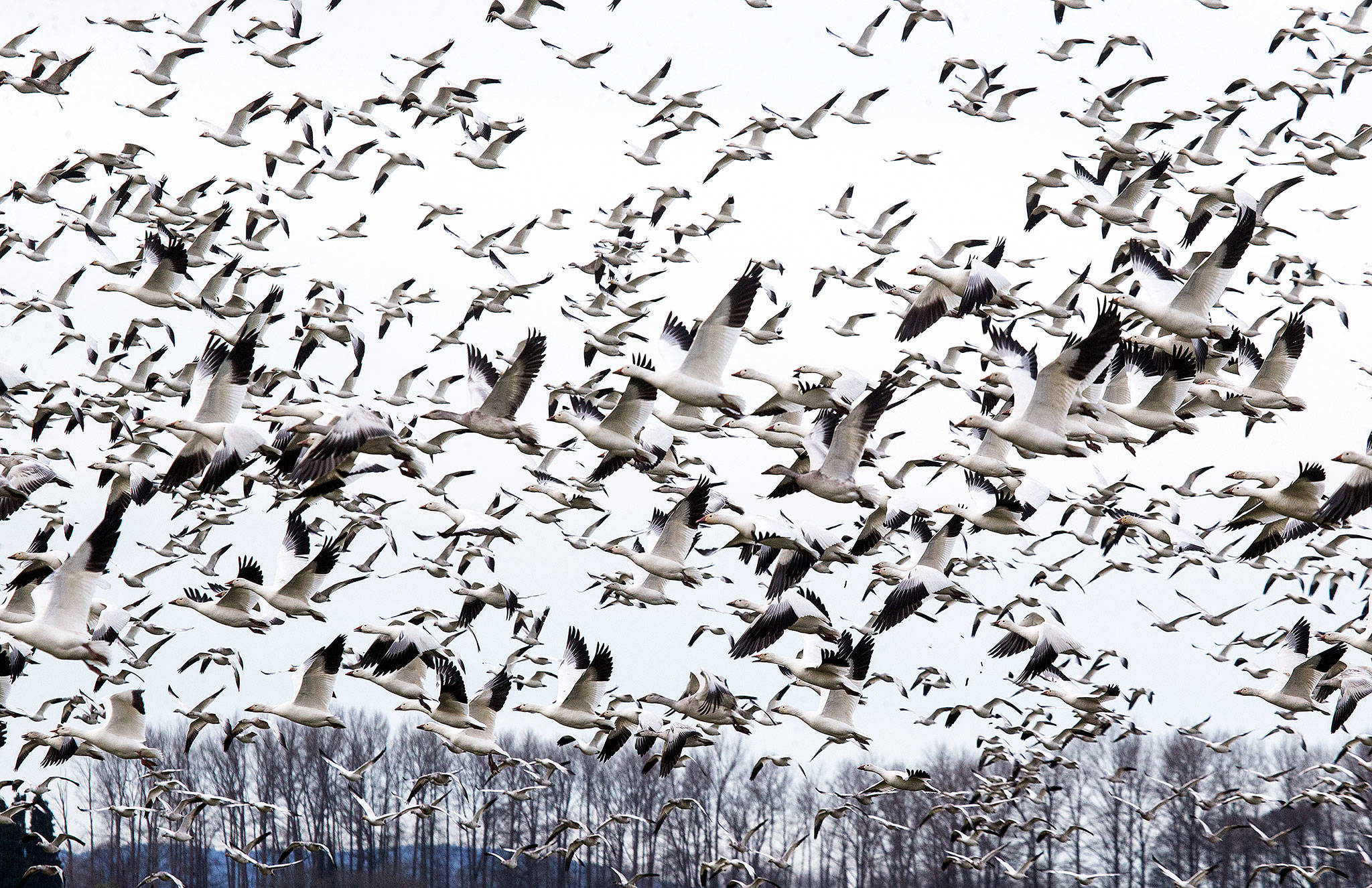Driving through the Skagit Valley, or even cruising along I-5 through Skagit County, you’re likely to see large white birds with black bills and long necks, necks that will get a kink in it when the bird is feeding.
Appreciate.
Without environmentalists, private financial support, and state and federal agencies, there would be no trumpeters to admire.
For three centuries, the swans have been killed for meat, skins, subsistence hunting, egg collection, down, feathers and sport. Thousands of skins were shipped to Europe between 1772 and the late 1800s until by 1935, there were about 80 known individuals in the U.S. Small populations were surviving in Canada and Alaska (not a state until 1959).
Ornithologists offered little hope for a species seemingly hurdling toward extinction. In what felt like a last chance, the Red Rock Lakes National Wildlife Refuge was created in Wyoming to protect the few swans wintering there.
Swans and eggs from the refuge were used in the early restoration projects at four western refuges. Later, eggs were gathered in Alaska, and zoos and private breeders entered the scene.
We reap the benefits from the restoration efforts. Western Washington has more trumpeter swans than any other area on the mainland. There are least an estimated 15,000 trumpeters, thousands of them in Skagit and Whatcom counties.
While hunters have stopped killing the largest waterfowl species in North America, or using lead shot to hunt waterfowl, there’s an unseen danger left after hundreds of years of hunting. Swans eat a significant amount of food, some of it hard to digest, such as hard grains. To help the process, they’ll eat grit, small pebbles that grind up those hard-to-digest foods. Some of the indigestible grit stays in the gizzard for a long time.
To a swan, lead pellets are grit, a grit that is poisonous. According to researchers, as few as three pellets can kill a trumpeter swan. Since 2000, hundreds of trumpeter swans have died of lead poisoning in Whatcom County alone. More swans die of lead poisoning than collisions with power lines.
Mill Creek’s Martha Jordan has been a force in the efforts to protect the trumpeter swans. Her interest in swans started in the late 1970s while working with collared snow geese near Mount Vernon.
She founded the Northwest Swan Conservation Association (www.nwswans.org) and is the executive director, and works with the national Trumpeter Swan Society. She has excelled at building partnerships between nonprofits and agencies.
Occasionally she is a surrogate mom to baby trumpeters.
At 7 p.m. Jan 31, Jordan will give a slide show on trumpeter and tundra swans and snow geese at the Adopt-A-Stream Foundation’s Northwest Stream Center at McCollum Park, 600 128th St. SE, Everett. Registration is required. Call 425-316-8592. Cost is $5 for foundation members; $7 for non-members. The talk is geared for eighth-graders to adults.
Other topics at the center are “All About Bears” featuring a handsome Karelian bear dog named Colter (Feb. 23), and “Ghastly Gourmet” featuring a beautiful vulture named Aura who has a 5-foot wingspan (March 16).
Quick trumpeter swan facts:
To feed under water, they tip into the air like ducks.
They fly with rapid, shallow wingbeats.
The swans often travel in pairs or family groups.
An adult has a wingspan of more than 7 feet and weighs 21 to 35 pounds.
They are a long-lived social species.
The young can swim and feed themselves almost immediately after hatching.
Skagit and Whatcom counties have the largest populations from November to April, usually in open fields and estuaries.
Eye-catching. Take the time to check out the winners of the Washington Trails Association’s Northwest Exposure Photo Contest (wta.org). Judges had to work through 8,000 entries in five categories. Do a search for winter hikes, pick one, and make it happen.
Columnist Sharon Wootton can be reached at 360-468-3964 or songandword@rockisland.com.
Talk to us
> Give us your news tips.
> Send us a letter to the editor.
> More Herald contact information.


























